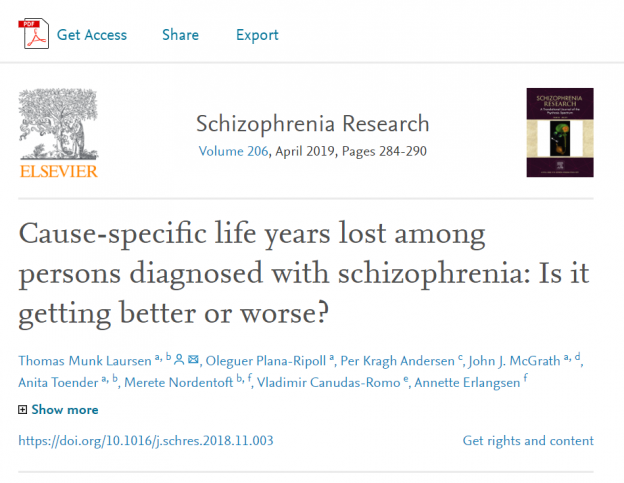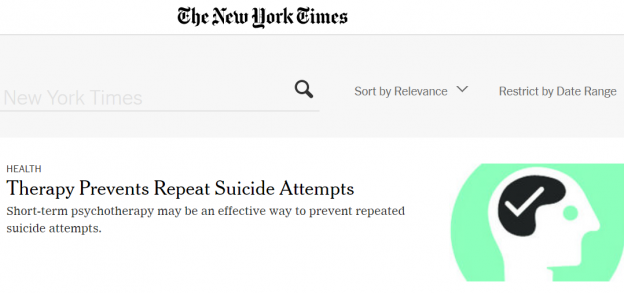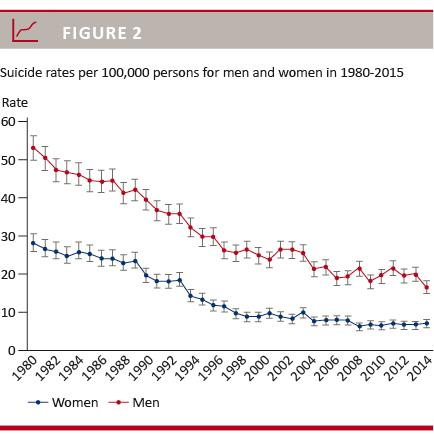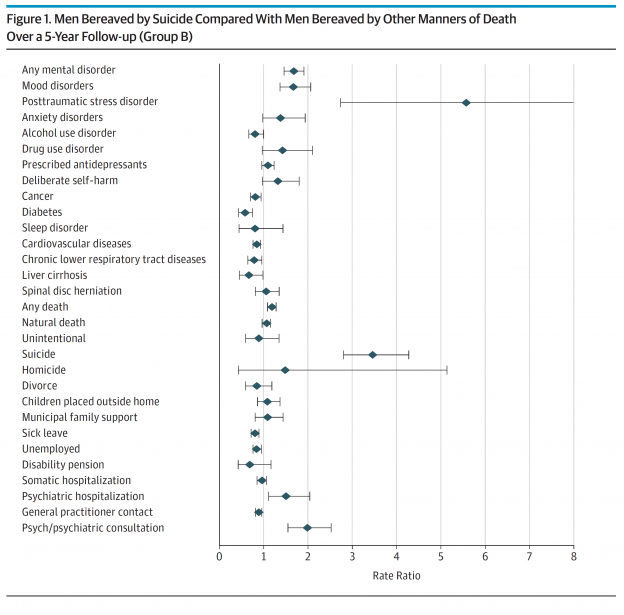People with schizophrenia have an increased risk of premature mortality compared to the general population. This study aimed to quantify which types of causes of death contributed to
The study has been published in Schizophrenia Research
https://www.sciencedirect.com/science/article/pii/S0920996418306339#f0005
DRISP: Annette Erlangsen & Merete Nordentoft
Partners:
- Thomas Munk Laursen, National Center for Register-based Research, Aarhus Denmark (first author on study)
- Oleguer Plana-Ripoll, The Lundbeck Foundation Initiative for Integrative Psychiatric Research (iPSYCH), Aarhus, Denmark
- Per Kragh Andersen, Section of Biostatistics, University of Copenhagen
- John J McGrath, Queensland Brain Institute, University of Queensland
- Anita Toender, National Center for Register-based Research, Aarhus Denmark
- Vladimir Canudas-Romo, School of Demography, Australian








